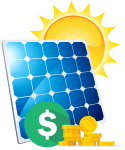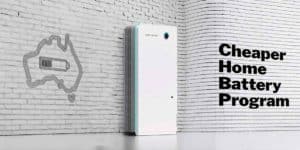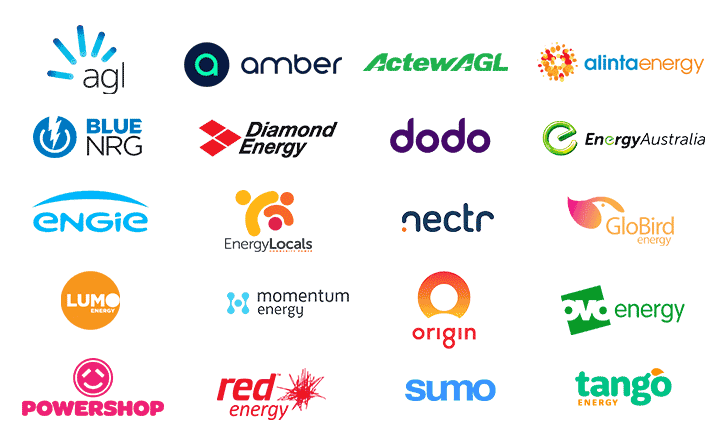
Looking to compare Solar Sponge Plans?
In July 2020, some electricity networks in NSW, Queensland and South Australia introduced “solar sponge” tariffs for households. These encourage users to ‘soak up’ cheaper power during the day when there is an abundance of solar energy. So these Time Of Use tariffs come with an off-peak period in the middle of the day – from 10am-3pm or even longer. In July 2021, all five Victorian electricity networks followed suit and introduced simplified time of use tariffs with off-peak periods applying from 9pm-3pm (18 hours per day) including peak solar generation hours. In July 2024, all NSW and ACT networks introduced solar sponge tariffs allowing all residential consumers with an interval meter to be able to access lower cost, renewable-powered grid power in the middle of the day.
Solar sponge tariffs can offer substantial savings for non-solar households as well as some solar households, who can take advantage of the low electricity rates in the middle of the day. We’ve summarised the energy plans currently in New South Wales, Queensland, South Australia and Victoria.
We are huge fans of solar sponge tariffs as they offer the double saving of lower network charges and lower daytime wholesale electricity rates and importantly incentivise households to consume lower cost renewable energy during the day. By shifting consumption to the middle of the day, households can reduce their use at peak evening periods and overnight when more fossil fuels are needed to meet grid demand. We expect that the majority of consumers will be financially better off on these tariffs. For practical advice on switching tariffs and the latest network tariff rules check out WATTever’s Changing Tariffs Guide.
Do you need a new meter?
If you have solar, you should already have an interval or smart meter at your property. A smart meter measures energy usage in 30 minute (or less) increments. With a smart meter installed, you can ask your existing or new retailer to switch to these tariffs.
However, if you only have an accumulation meter, then you will need to contact your retailer to have your meter upgraded. This new meter will likely be a smart meter which reports energy usage (and solar export) daily to your retailer. Smart meters remove the need for a meter reader to visit your property. Plus they also give you access to more detailed usage and solar export data, either in the retailers online portal or you can request this from your network.
Want to find the best deals for you?
Low usage rates are important, but to find the best deal for your homes unique energy use, you’ll want to see the cheapest combination of rates, daily charges, controlled load rates and feed-in tariffs (if you have solar). We make it easy to get it right when you compare with WATTever’s comprehensive electricity comparison. You’ll see a personalised cost ranking of all publicly listed electricity plans, based on your energy use to help you make serious savings. We include all retailers, tariff types, discounts, solar feed-in tariffs, input for concessions and more. For extra tips check out our essential guide to comparing electricity properly.Select your State/Territory:
Solar Sponge Time Of Use rates (tariff EA025) by retailer in the Ausgrid network (Sydney, Central Coast, Hunter Region and Newcastle)
TOU Periods: Peak = 3pm-9pm every day from Nov to Mar and from Jun to Aug, Off-Peak = all other times.
Solar Sponge Time Of Use rates (tariff N71) by retailer in the Endeavour Energy network (Western Sydney, Blue Mountains, Southern Highlands and Illawarra)
TOU Periods: High-Season Peak (Nov to Mar) = 4pm-8pm weekdays exc. Public Holidays, Low-Season Peak (Apr to Oct) = 4pm-8pm weekdays exc. Public Holidays, Off-Peak = all other times
Solar Sponge Time Of Use rates (tariff BLNRSS2) by retailer in the Essential Energy network (Regional NSW)
TOU Periods: Off-Peak = 10am-3pm and 10pm-7am, Peak = 7am-10am and 3pm-1pm
Solar Sponge Time Of Use rates (tariff 6900) by retailer in the Energex Network (South East Queensland)
TOU Periods: Off-Peak = 9am-4pm, Shoulder = 9pm to 9am and Peak = 4pm-9pm
Solar Sponge Time Of Use tariff (12B) rates by retailer in the Ergon Energy Network (Regional Queensland)
TOU Periods: Off-Peak = 9am-4pm, Shoulder = 9pm to 9am and Peak = 4pm-9pm
Solar Sponge Time Of Use rates (tariff RTOU) by retailer in South Australia
TOU Periods - RTOU Tariff: Off-Peak = 10am-3pm, Peak = 6am-10am and 3pm-1am, Shoulder = 1am-6am
TOU Periods - RELE Tariff: Off-Peak = 10am-4pm, Peak = 5pm-9pm (Nov-Mar) and Shoulder = all other times
Solar Sponge Time Of Use rates (tariff NAST11) by retailer in the AusNet Services Network (Eastern Victoria)
TOU Periods: Off-Peak = 9pm-3pm and Peak = 3pm-9pm
Solar Sponge Time Of Use rates (tariff CRTOU) by retailer in the CitiPower Network (Melbourne CBD and inner suburbs)
TOU Periods: Off-Peak = 9pm-3pm and Peak = 3pm-9pm
Solar Sponge Time Of Use rates (tariff A120) by retailer in the Jemena Network (North West Melbourne)
TOU Periods: Off-Peak = 9pm-3pm and Peak = 3pm-9pm
Solar Sponge Time Of Use rates (tariff PRTOU) by retailer in the Powercor Network (Western Victoria)
TOU Periods: Off-Peak = 9pm-3pm and Peak = 3pm-9pm
Solar Sponge Time Of Use rates (tariff URTOU) by retailer in the United Energy Network (South Eastern Melbourne and Mornington Peninsula)
TOU Periods: Off-Peak = 9pm-3pm and Peak = 3pm-9pm
Solar Sponge Time Of Use rates (tariff 17) by retailer in the Australian Capital Territory (Canberra - Evoenergy network)
TOU Periods: Off-Peak = 11am-3pm, Peak = 7am-9am and 5pm-9pm, Shoulder = all other times.
Solar Sponge Time Of Use tariff rates (Midday Saver Tariff) by retailer in Western Australia
TOU Periods: Solar Sponge/Super Off-Peak = 9am-3pm, Peak = 3pm-9pm and Shoulder/Off-Peak = 9pm-9am
| Retailer | Peak TOU | Shoulder TOU | Off-Peak TOU | Daily Charge^ | Link to Plans |
|---|
^ Rates shown include GST and all available discounts. Plans are updated weekly from retailer’s Basic Plan Information Documents (BPIDs)/Energy Price Fact Sheets

2025-26 DMO electricity price rise
Power price changes are just around the corner. Here’s the rundown on the 2025-26 Default Market Offer (DMO) electricity price and what it means for energy bills from July.

Cheaper Home Battery Program set to boom
The Federal government’s new $2.3 billion Cheaper Home Batteries Program offers a generous battery discount for Aussie households and small businesses.

2025-26 Victorian Default Offer electricity price announced
Victoria’s Essential Service Commission (ESC) has released its final determination for the 2025–26 Victorian Default Offer electricity price (VDO). The good news is there will be very little change to electricity prices from July 1



